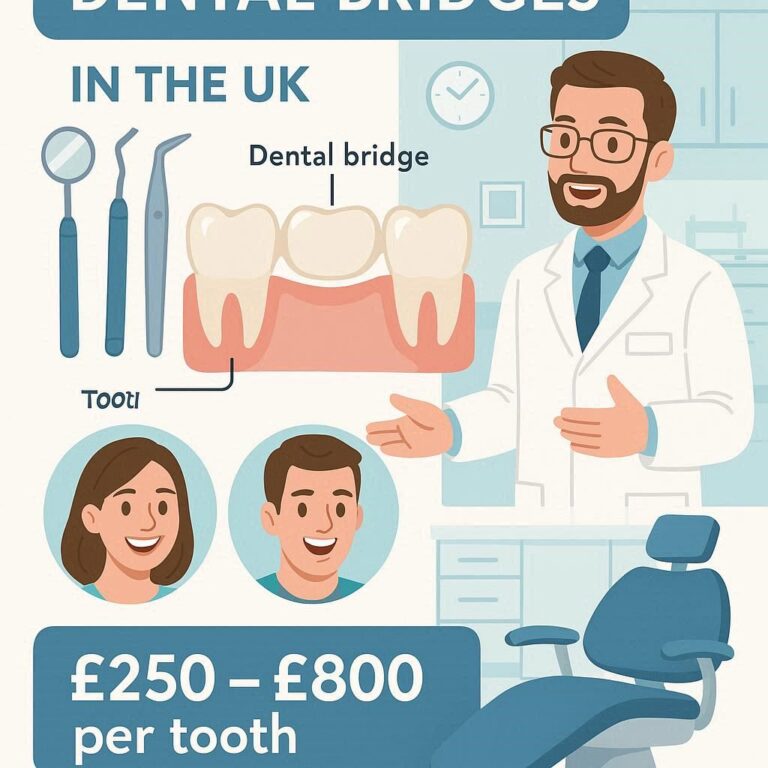A Comprehensive Guide to fixed bridge cost philippines: Restoring Your Smile with Confidence
Losing a tooth can be a daunting experience. Not only does it affect your smile’s aesthetics, but it can also impact your ability to chew comfortably and speak clearly. Fortunately, dental bridges offer a reliable and long-lasting solution for replacing missing teeth.
This comprehensive guide delves into the world of fixed bridge cost philippines. We’ll explore the factors influencing the price, different bridge materials, the dental procedure itself, and additional considerations to ensure you make an informed decision.

Understanding Fixed Bridges: A Bridge to a Brighter Smile
A fixed bridge is a dental restoration used to replace one or more missing teeth. It consists of artificial teeth (pontics) anchored to healthy teeth on either side of the gap (abutment teeth). These abutment teeth are capped with crowns to provide a secure foundation for the bridge. Unlike dentures, fixed bridges are permanently cemented in place, offering a stable and natural-looking solution.
Factors Affecting Fixed Bridge Costs in the Philippines
The cost of a fixed bridge in the Philippines can vary depending on several factors. Here’s a breakdown of the key elements influencing the price tag:
- Type of Bridge Material: The material used for the bridge significantly impacts the cost. The most common options include:
- Porcelain-Fused-to-Metal (PFM): This is a popular and cost-effective choice. The metal core provides strength, while the porcelain layer mimics the natural appearance of teeth. PFM bridges typically range from ₱15,000 to ₱25,000 per tooth.
- All-Ceramic or Zirconia: These materials offer superior aesthetics, mimicking the natural translucency of teeth. They are also biocompatible and less likely to cause gum irritation. However, they are more expensive, with prices starting around ₱26,000 per tooth.
- Gold Alloy: This is a highly durable option, but the gold content significantly increases the cost. It’s not as popular due to the aesthetic factor, with prices ranging from ₱30,000 and upwards per tooth.
- Number of Teeth Replaced: The number of missing teeth directly translates to the number of pontics and crowns needed. Naturally, a bridge replacing three teeth will be more expensive than one replacing a single tooth.
- Location and Experience of the Dentist: Dentists in metropolitan areas or with extensive experience may charge slightly higher fees compared to those in rural locations. However, this doesn’t necessarily equate to better quality. Research the dentist’s qualifications and patient reviews to ensure you find a skilled professional who aligns with your budget.
- Complexity of the Procedure: In some cases, additional procedures like root canals or gum surgery might be necessary before placing the bridge. These add-on procedures will increase the overall cost.
- Dental Laboratory Fees: The dental lab that fabricates the bridge will also factor into the cost.
- Dental Insurance: Dental insurance plans may offer partial or complete coverage for fixed bridges. Check your specific plan details to determine your out-of-pocket expenses.
Estimated Fixed Bridge Cost in the Philippines (per tooth)
| Material | Price Range (₱) |
|---|---|
| Porcelain-Fused-to-Metal (PFM) | ₱15,000 – ₱25,000 |
| All-Ceramic or Zirconia | ₱26,000+ |
| Gold Alloy | ₱30,000+ |
Note: This table provides a general estimate. The actual cost may vary depending on the factors mentioned above.
The Dental Bridge Procedure: A Step-by-Step Guide
Understanding the procedure involved in getting a fixed bridge can help you prepare mentally and financially. Here’s a breakdown of the typical steps:
- Consultation and Diagnosis: During your initial consultation, the dentist will discuss your dental history, examine your teeth and gums, and take X-rays to assess the jawbone and surrounding teeth. They will determine if a fixed bridge is the right solution for you and discuss the different material options and expected costs.
- Tooth Preparation: If the abutment teeth are healthy, the dentist will prepare them by removing a small amount of enamel and dentin to create space for the crowns. This ensures a proper fit for the bridge. Anesthesia will be used to minimize any discomfort.
- Impression Taking: Impressions of your teeth will be taken to create a precise model of your mouth. This model will be used by the dental laboratory to fabricate the custom bridge that perfectly fits your teeth.
- Temporary Bridge (Optional): In some cases, the dentist might provide a temporary bridge to wear while the permanent bridge is being crafted in the lab. This helps maintain aesthetics and functionality during the waiting period.
- Bridge Placement: Once the permanent bridge is ready, you’ll return for another appointment. The dentist will carefully check the bridge for fit and color. They will then cement the bridge onto the prepared abutment teeth.
- Post-operative Care: The dentist will provide instructions on caring for your fixed bridge, including proper brushing, flossing, and regular dental checkups. Maintaining good oral hygiene is crucial for the longevity of your bridge.
Additional Considerations for Fixed Bridges in the Philippines
- Financing Options: Many dental clinics in the Philippines offer financing plans to help patients manage the cost of fixed bridges. Discuss these options with your dentist to find a plan that suits your budget.
- Dental Tourism: The Philippines is a popular destination for dental tourism due to its high-quality dental care at affordable prices. However, thorough research is crucial. Ensure the chosen clinic is reputable and has qualified dentists on staff.
- Alternatives to Fixed Bridges: Dental implants are another option for replacing missing teeth. They offer a more permanent solution but typically come with a higher price tag. Discuss the pros and cons of each option with your dentist to determine the best fit for your needs.
Frequently Asked Questions (FAQs) about Fixed Bridges in the Philippines
- How long do fixed bridges last? With proper care, fixed bridges can last for 5-10 years or even longer.
- Does getting a fixed bridge hurt? The initial tooth preparation might cause some discomfort, but anesthesia is used to minimize any pain.
- Can I eat normally with a fixed bridge? Yes, fixed bridges are designed to withstand normal chewing forces. However, it’s best to avoid very hard or sticky foods that could damage the bridge.
- How do I clean a fixed bridge? Brush and floss your teeth regularly, paying particular attention to the area around the bridge. Your dentist might recommend special cleaning tools to reach underneath the bridge.
- What happens if a fixed bridge breaks? If a fixed bridge breaks, contact your dentist immediately. They can assess the damage and determine the best course of repair or replacement.
Conclusion
Fixed bridges offer a dependable and aesthetically pleasing solution for replacing missing teeth in the Philippines. The cost can vary depending on several factors, but with careful planning and research, you can find a treatment plan that aligns with your budget and dental needs. This comprehensive guide equips you with the knowledge to make informed decisions for a brighter, healthier smile.
You might also want to check out these articles for more ideas: 3 unit bridge cost with insurance


